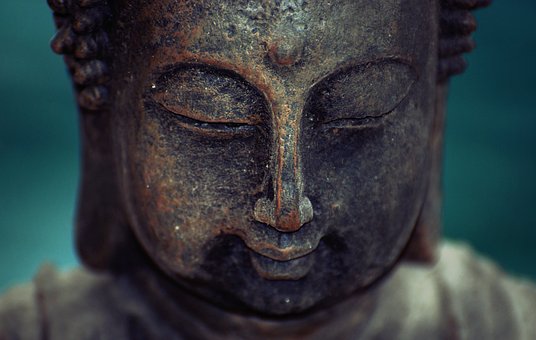More than 180 musicians will be involved in the inaugural concert of the RAI Orchestra season on Wednesday 19 October. The symphonic-choral work, symbol of the triumphant spirituality over death, will be performed, the Resurrection by Gustav Mahler, starring the RAI Symphony Orchestra of Turin and its director emeritus Fabio Luisi. On stage also the Chorus of the Teatro Regio di Torino directed by Andrea Secchi and the solo voices of the soprano Valentina Farcas and the alto Wiebke Lehmkuhl.
Mahler’s page is particularly significant for the recent history of RAI in Turin, having already been performed in January 2006 under the baton of Raphael Fruhbeck of Burgos, for the reopening of the RAI Auditorium after eight years of restoration. In the following years it was revived in March 2014 by Jurai Valcuha and in January 2020 by James Conlon, both principal directors of the team.
The symphony, which involves more than 110 instrumentalists on stage, in addition to seventy voices and two solo singers, represents a return to normality of a large orchestra such as that of RAI, after the limited-number programming made necessary due to the pandemic.
The Second Symphony was composed between 1888 and 1894 when Mahler was director of the Budapest and Hamburg Opera and constitutes the work that required the composer the longest gestation time. The work is, in fact, a grandiose choral monument, begun by a 28-year-old boy and finished six years later by an already established man of thirty-four.
Mahler had become aware of his growing role as conductor, a role capable of giving him a decidedly new authority.
The first three movements were conducted by the composer himself on March 4, 1895 in Berlin, without particular success. The first complete performance, on 13 December of the same year, in Berlin was an immense success with the public, due to the addition of the Lied for alto.
The opening night scheduled at the RAI Auditorium was sold out and the concert will then also be offered at the Nuovo Giovanni da Udine theater, next Friday 21 October, on the occasion of the 25th anniversary of the construction of the main theater of the Friulian capital.
The Symphony No. 2 in C minor for Chorus and Orchestra only, known as the “Resurrection”, was written in the same period as the First Symphony, between 1888 and 1894.
Mahler’s resolution to complete the Symphony testifies to a sensitivity not far from the desire for reaffirmation contained in Nietzsche’s eternal return. Music has rarely attempted, with more pathos, to overcome itself and Mahler, for the first Berlin performance in 1896, yielding to the insistence of the young critic and composer Max Maschalk, drafted a preparatory program for listening to the Second Symphony. The debut of the work is dominated by rough fragments of the scale in C minor, which almost seem to “climb” on something that repels them. The dark vitality of the basses is not interrupted when wood and brass exhibit their own marching movement. The tragic atmosphere is removed from the cantability of the strings, which derives from contemporary Lieder.
Originally the second Symphony was conceived as the conclusion of the First Symphony in D major, of March 1888. The page would be provisionally completed and endowed with a separate title, “Totenfeir”, or funeral rite, modeled on the example of the poem symphonic. The Totenfeier would have found a following only in 1893. In the middle of that year the work could not progress, waiting to be completed. Mahler himself sensed that, in a form of great proportions, with the use of a colossal orchestra, it was up to the word redemptive the task of completing the musical idea, which arrived in 1894, when the composer attended, at the end of March 1894 , at the funeral ceremony in honor of Hans with Bulow, the recently deceased conductor, who helped Mahler a lot during the Hamburg period.
After the famous funeral ceremony of the first movement, also called Totenfeir ”, Mahler wanted a break of a few minutes to mark the negative pole from which to ascend to arrive at the Resurrection celebrated in the finale.
The first stage is represented by the second movement, whose sweetness suggests Adorno’s phrase, derived from Mann’s DocktorFaustus, in which it is stated that “Mahler’s music externally caresses the hair to what is addressed”. The third movement has the function of a Scherzo and is based on the melody of a previously composed Lied, “The sermon of Saint Anthony to the fish”, obtained from a famous collection of popular songs. In this movement, of great emotional impact, the surfacing and sinking of the fish gives rise to a left patrol following the entry on the scene of oboe, clarinet and timpani.
The entrance of the Choir is prepared by a calm full of promise. Distant calls of horns return, prolonged by the interventions of the flutes. When the voice of nature, similar to a bird’s voice, has died out, the human voice arises with the words of Klopstock’s idea.
Mahler once again in this Symphony has proved to be a profound innovator of the symphonic form, bringing, with his works, the tonal system to express its possibilities to the maximum.
The RAI Symphony Orchestra season is scheduled for Wednesday 19 October at 8pm.
Replica next Thursday 20 October, again at the RAI Auditorium, at 20.30
MARA MARTELLOTTA
RAI Arturo Toscanini Auditorium in Turin
Rossaro square
Tel 011/8104653
ticketetteria.osn@rai.it

